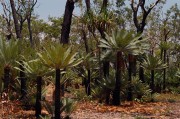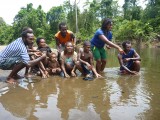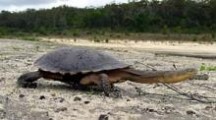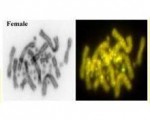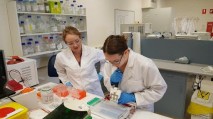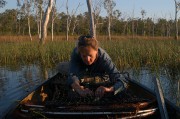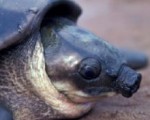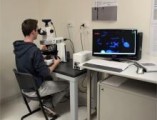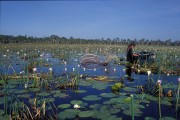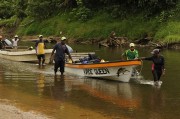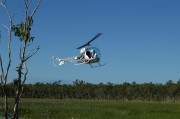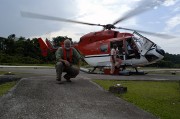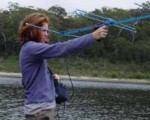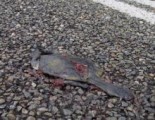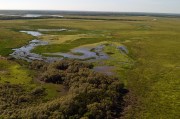The Bellinger River Turtle, Myuchelys georgesi, is in trouble. A virus recently decimated the population, virtually extirpating the adult population from its restricted native range. Effectively, only juveniles remain. In this article, which appeared today an Biological Conservation, we outline our views on the causes of the decline.
Infectious disease is a contributing factor to species extinction or endangerment. Extinction is most likely to occur when a pathogen is evolutionarily novel, or when it utilizes an alternate reservoir, or when hosts have small pre-epidemic populations.

In this paper, we focus on such a case where a mystery disease almost has driven the range restricted, Bellinger River Turtle (Myuchelys georgesi), in north-eastern NSW, Australia, to extinction in a remarkably short time. [Photo: Rowan Simon].
The disease did not affect other turtle species, and the juvenile population of M. georgesi appears unaffected.
The cause of the disease remains unknown, but may be a novel virus and whether the species can recover with or without human intervention is currently unknown.
We review the biology of M. georgesi and explore the epidemiology of the disease. We highlight circumstantial evidence of the potential role of recent environmental change in the susceptibility of M. georgesi. We show that long-term regional warming and localised drying reduced both water levels in the river and the number of flooding events that occurred prior to the disease outbreak.
We also provide evidence that the food web may have been disrupted, possibly causing malnutrition and reduced immunocompetence of sub-adult and adult turtles. We hypothesize that these factors may have exacerbated the virulence and contagiousness of a novel, but as-yet unidentified pathogen, and must be also mitigated in any future recovery actions.
The identity of the pathogen is necessary for managing the recovery of the species, however, understanding the processes that rendered the species susceptible to infection is of equal importance for planning the recovery of the species from the brink of extinction.
Sad times.
You can access the full article for 50 days free of charge, for more detailed information.

